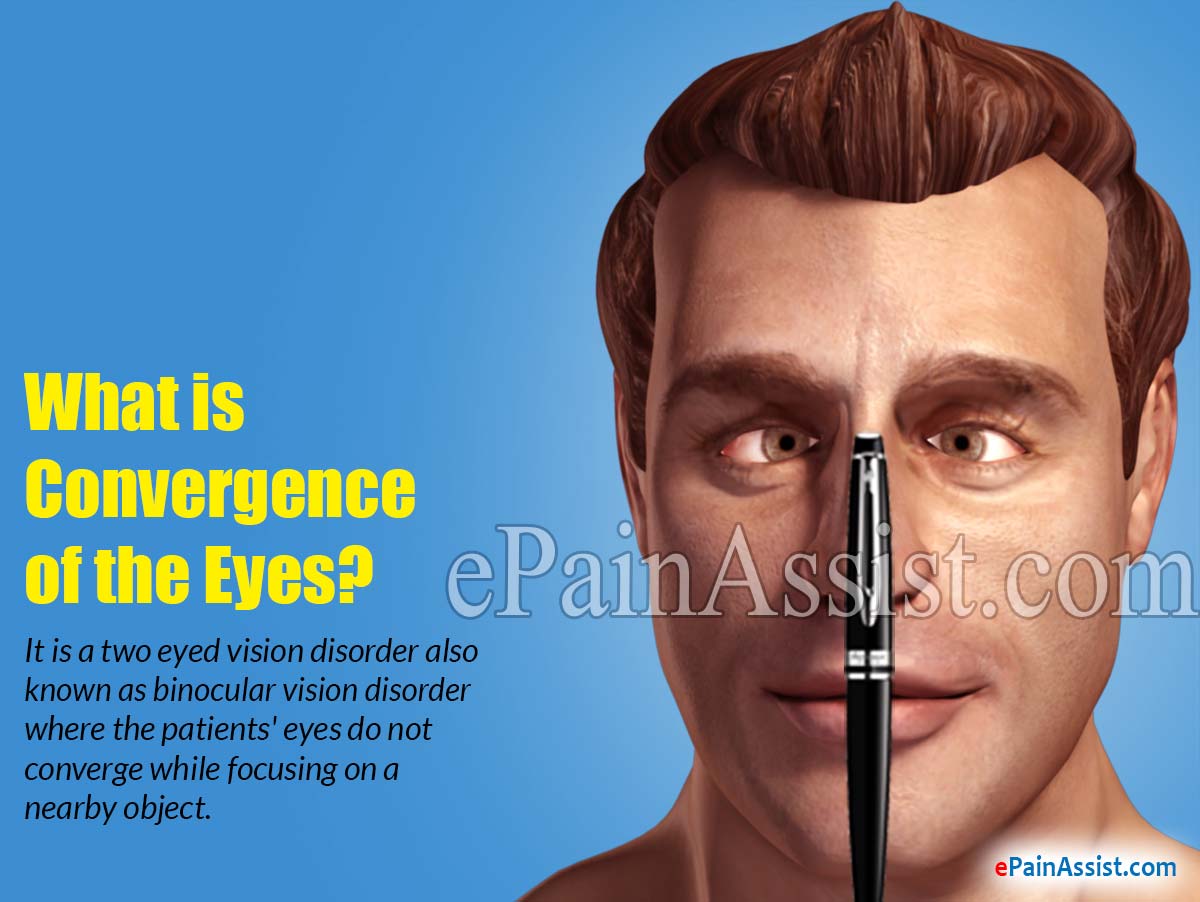What is Convergence Disorder or Convergence Insufficiency?
Convergence Disorder or Convergence Insufficiency is the principal cause of strain in the eyes, double vision or diplopia, headaches and blurred vision.
Convergence Disorder or Convergence Insufficiency happens when the human eyes cannot coordinate and work jointly/ collectively when a person is attempting to concentrate on a nearby item. When you look at a nearby object for example: trying to read a book, your eyes are required to turn inward collectively (converge) to concentrate. This offers you binocular vision, allowing you to look a single figure/image.
Convergence Disorder or Convergence Insufficiency can result in complexity in reading. This might make parents/ teachers think that a child holds a learning disability, not knowing that the child is unable to converge and see a single image. Treatments for Convergence Disorder or Convergence Insufficiency are normally effective.
What is Convergence of the Eyes?
Convergence Disorder or Convergence Insufficiency is a two eyed vision disorder also known as binocular vision disorder where the patients’ eyes do not converge while focusing on a nearby object. Convergence Disorder or Convergence Insufficiency is a problem where when the patient tries to focus on a nearby item for example read a book; his/ her eyes slide or drifts out resulting in blurred vision.

What is an Exophoria of the Eye?
Exophoria is a type of heterophoria where there is an eyes inclination to move outward. Through eye tests, if the eyes are detached by prisms, the visual axes will seem to appear to diverge from one another.
What are the Difference between Convergence Disorder or Convergence Insufficiency and Exotropia?
Eye misalignment/disposition occur in Convergence Disorder or Convergence Insufficiency, when concentrating at nearby items. Infrequently, a well restricted irregular exotropia (towards the outside eye rotating) will be there at near and far in an individual with Convergence Disorder or Convergence Insufficiency; in spite of this, in Convergence Disorder or Convergence Insufficiency the divergence is indicative and triggers impulsively only when spotting on near objects.
Is Convergence Disorder or Convergence Insufficiency Common?
Convergence Disorder or Convergence Insufficiency has a recorded occurrence among adults and children in the USA of 2.5 percent to 13 percent.
How is Convergence Disorder or Convergence Insufficiency Caused?
The cause of Convergence Disorder or Convergence Insufficiency is unknown and researchers are still working on it. Convergence Disorder or Convergence Insufficiency results as disposition of the eyes while focusing on close objects. The exact reason is not identified, but the disposition occupies the muscles that shift the eye. Normally, one eye moves outward when you are spotting on a nearby object or word.
- Convergence Disorder or Convergence Insufficiency is an ordinary near vision trouble which is winning public attention.
- Convergence Disorder or Convergence Insufficiency interferes with an individual’s ability to read, learn, see, & do work at a close distance.
- In the earlier time, Convergence Disorder or Convergence Insufficiency has often left undetected as tests for diagnosing it are not incorporated in (I) pediatrician’s eye examinations; (II) school screenings; and (III) basic eye tests.
- An individual can pass 20 by 20 eye visual aid check and still hold Convergence Disorder or Convergence Insufficiency.
- Treatment options are ranging from inactive (prism lenses) towards active (office-centered vision therapy).
- Scientific investigation via National Eye Institution has confirmed that office-centered vision treatment is an ultimate treatment for Convergence Disorder or Convergence Insufficiency.
- Home-centered pencil pushups treatment is generally prescribed treatment for Convergence Disorder or Convergence Insufficiency; however scientific investigations have revealed that these actions are not very effective.
- Eye surgical treatment is hardly ever suggested for Convergence Disorder or Convergence Insufficiency.
- While clinical outcomes prove that Convergence Disorder or Convergence Insufficiency can be medicated at any age, recent scientific investigations have been accomplished on the young adult and pediatric populations only.
Does Every Patient Who Meets Criteria for Convergence Disorder or Convergence Insufficiency Require Treatment?
Throughout a routine eye inspection, convergence difficulty may be identified even exclusive of the above mentioned signs and symptoms. Some patients diagnose in the office because of having poor convergence; conversely, they are asymptomatic. This might be the outcome of true convergence difficulty, but is frequently found when the affected individual is unfocused, overly excited, shy, or does not understand the instructions given. These individuals should either be reinvestigated on a different time or merely watched for indication of headaches or diplopia with near work. An individual who is not holding difficulties with near occupations but investigations certain for Convergence Disorder or Convergence Insufficiency at the workplace does not require any medications although should be followed.
On the other hand, a child with sufficient convergence in the school may infrequently have indications at home identical with Convergence Disorder or Convergence Insufficiency. During these situations, a results of medications for convergence difficulties can be established and the child tracked by report of progress in symptoms.
- “Convergence Insufficiency.” College of Optometrists in Vision Development. https://www.covd.org/page/Convergence
- “Understanding Convergence Insufficiency.” National Eye Institute. https://www.nei.nih.gov/learn-about-eye-health/eye-conditions-and-diseases/convergence-insufficiency
- Rouse, M. (2015). Convergence insufficiency: A major review. Optometry in Practice, 16(1), 1-10.
Also Read:
